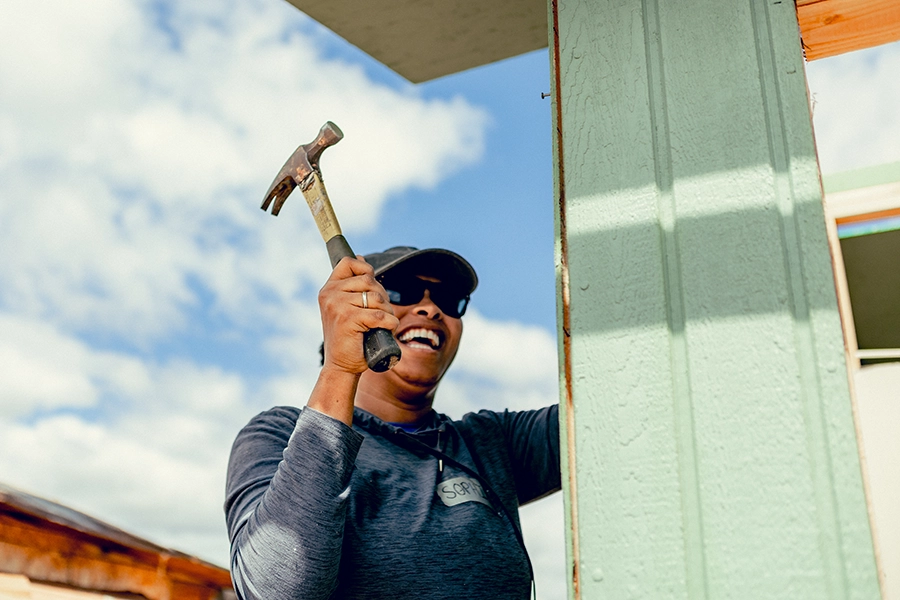Become a video call expert with our top ten tips for maximizing connection in a remote world. No pants required.

Remote work is here to stay, in fact, it is on the rise. The pandemic accelerated a way of working that, due to technology, trust, and flexibility, has been continually gaining traction.
A survey by Owl Labs found the following:
- Remote employees save an average of 40 minutes daily from commuting.
- Since 2020 and COVID-19, people have been meeting by video calls 50% more.
- During COVID-19 close to v 70% of full-time workers were working from home.
- After COVID-19, 92% of people surveyed expected to work from home at least 1 day per week, and 80% expected to work at least 3 days from home per week.
- 23% of those surveyed would take a 10% pay cut to work from home permanently.
- People are saving on average close to 500 dollars per month being at home during COVID-19. Resulting in savings close to $6000 per year.
- A mere 20-25% of companies are paying some of the cost for home office equipment and furnishings.
- 81% of those surveyed believe their employer will continue to support remote work after COVID-19.
- 59% of respondents said they were more likely to choose an employer who offered remote work compared to those who didn’t.
Making the adjustment to remote work and staying connected can be difficult. Even with the best of intentions there can be a degree of isolation. You might have an amazing team, a group chat that might make HR question your life choices, and you’re engaged in multiple meetings; maybe you’re working from a coffee shop (the classic being alone in a crowded room). Whatever the circumstances, it can be challenging. There is an art form to maintaining connection in a remote world, and it’s ok to remember one key fact, video calls are still new. It is not a natural way to communicate; so don’t worry; not all hope is lost.
You may have heard Britt River’s story, if not then you’ll want to see it here. Britt is something of an expert when it comes to connection and a People First approach in a work environment.
Here are Britt’s top 10 tips for keeping the connection clear, and minimizing that “virtually awkward” feeling. There’s a reward at the end of the blog too, but you must read the whole thing. No scrolling to the bottom now!
Can you hear me, do you have the right connection for connection?
#1 – Having a solid internet connection to display quality visuals and clear audio is important. Robot voice, choppy connections, the dreaded freeze, calls dropping all add up to an online hide and seek that can make things more than virtually awkward.
#2 – If possible, try and log in to a meeting a minute or two early to get situated, composed and to give yourself that buffer zone for getting stuck in traffic (what we like to call being caught behind the “dreaded wheel.” For Apple, it’s the rainbow wheel of doom and for Microsoft,` it’s the blue circle of delay; you know the one, it’s frustrating, annoying, and well, downright infuriating).
Framing, Lighting and Setting Yourself up for an “Illuminated” Conversation
#3 – You’ve got the connection, you’re in the meeting but you’re not Batman so step out of the shadows. Sometimes an air of mystery in a conversation can be exciting but it is not this day, and this is not the time for it. Centralizing yourself on the screen, being well lit and allowing people to see you has a profound effect on the subconscious aspects of connection. Invest in a ring light. It helps (and it might just set you on course to become a YouTube influencing sensation).
Body Language and The Limited Ability to See/Experience the Nonverbal
#4 – How much of communication is nonverbal? The answer, 70%-93% (according to Lifesize). Video conferencing, though an incredible medium for connection, severely curtails that ability to see micro expressions and to really experience the nuances of non-verbal communication. The larger the meeting the harder it can be. In a meeting of 5 people or less try and keep everyone one visible so you can see what’s happening. Chances are, even with excellent framing, you might only see someone from the shoulders up, so you are relying on facial expressions and tone of voice.
Where Do You Look? What Has Your Attention?
#5 – Fun fact, Apache helicopter pilots can train their eyes to look in different directions. Apparently, anyone who has been in a Zoom meeting can do the same (if you have two screens) … kind of… not really. Imagine being in conversation with someone who is continually looking away from you/behind you. Being present, being focused on the meeting and putting away the multi-tasking is essential to connection. If you do need to check something, then jump off camera. Maintaining eye contact is still important, so if you are speaking then take your eyes off yourself and look at your camera. We all do it. Zoom is a wonderful place to try out new hairstyles and cool facial expressions. Zoom is the magic mirror that we can forget that other people can see into sometimes.
The Conversation, Presentation, and the Next Step in Public Speaking
#6 – Fear of Public Speaking, or Glossophobia, to give it its technical name, ranks high among some of our greatest fears, and video conferencing adds another layer into the mix. That feeling of dread that takes place when you anticipate being the next person called. The sudden loss of motor skills when you try and take yourself off mute to speak (or give your whole message while muted), slide decks and screen shares that you wrestle like alligators all add up to a terrifying, nerve-racking experience; life is most certainly happening TO you at that point.
#7 – This is where you need to breathe, pause, and make use of preparation. Preparation is key. If you’re conducting or participating in a meeting, engaging in a video interview, or having a one on one it can be helpful to prepare a loose script (especially in the case of interviews with pre-defined questions). The stakes feel higher, but these are just conversations.
The Acknowledgement
#8 – One of the things we do at Titus is to celebrate, encourage and recognize others in meetings using shout outs. We do this in video calls and physical meetings, and there’s a significant difference in the response (or there can be). In a physical meeting you can see the recipient light up when there is that acknowledgment of gratitude expressed. Maybe it’s a raising of the hand or a head nod, maybe it’s an audible “thank you.” These responses can sometimes be lost in video calls. It can be like listening to the sharer telling a story or watching a YouTube video. With everyone on mute, except the person speaking, it can feel a little disingenuous and like speaking into a vacuum. If you’re receiving encouragement then come off mute, acknowledge it. Everyone loves it and it’s not a Kanye moment… promise. It builds connection with everyone.
It’s Mute (moot) Point
#9 – Ah, the mute button is a tool for good, impossible to use… a tool for POWER. However, you use it there are times when perhaps you just need to leave it alone. If you’re in a small group meeting of 5 people or less, and you have minimal background noise, then leave it alone. Be a part of the group chat, jump in with a comment, keep the interactions lively. It helps keep things as real and as connected as they possibly can be.
Let people hear you laugh! We’ll say that again, let people hear you laugh. Muting the volume doesn’t just eliminate background noise but it eliminates emotion. If you have a larger group setting where it’s not practical to come off mute, then make use of the chat box. Throw in an emoji, drop in a “lol,” be one of the technology advanced cool kids that somehow throws a gif or meme in there; in fact, speak in meme! Who doesn’t love the perfectly timed meme that communicates exactly what you are FEELING!
The Background Check
#10 – Zoom/Teams backgrounds are an interesting one and the jury is still out on this one. There are some that love a good background and use it as a branding tool, to share a dream location or because they are in a public place, and they feel it would be inappropriate to share because of the type of meeting. The flip side is the pursuit of authenticity; allowing someone to see snapshot into your world. A home office with guitars on the wall. A hipster coffee shop. Sitting outside on a porch overlooking the mountains on a summer’s day. Location can invite conversation and allow for connection that goes beyond just business. It can be authentic; it can be real.
Well, you made it to the end of the blog, congratulations, click here for your reward.
At Titus we love meetings and when working remotely we see the opportunity to gather virtually, and more importantly, how we gather virtually, as a key to building a culture your people want to be a part of. We love meetings so much that we developed a performance management platform called ETHO and created a whole area dedicated to curating meetings that matter. We’d love to tell you about it.
TITUS INSIGHTS
Refreshing perspectives and practical expertise from the Titus team.
Committed To Radical Generosity
Our dedication to radical generosity keeps us focused on what matters most, and it allows us to make a trusted and lasting impact on the world around us. It’s the foundation of our culture and our partnerships.



